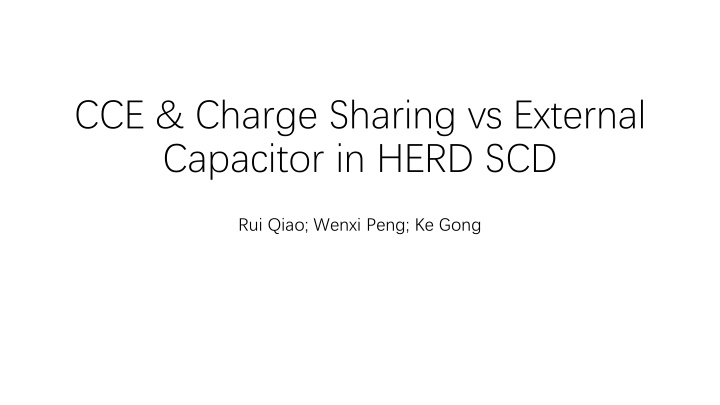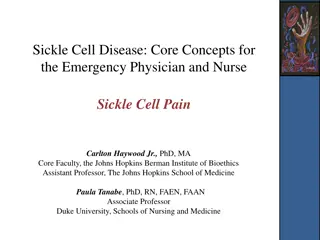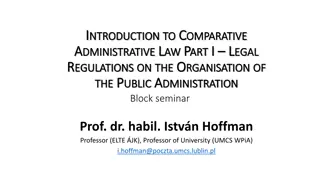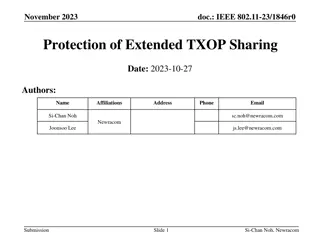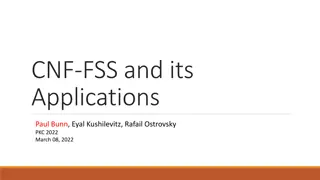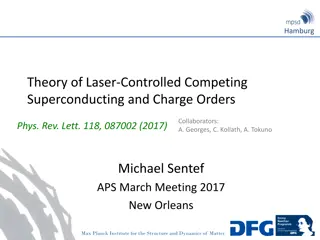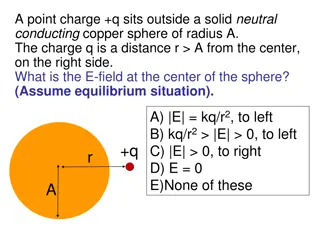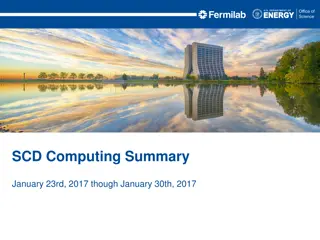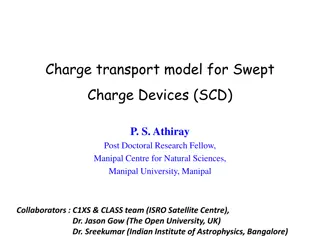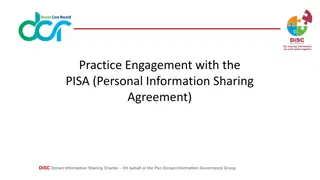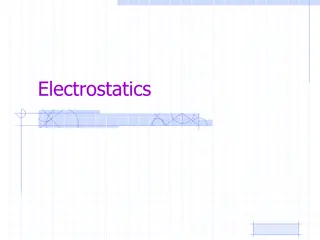Comparison of Charge Sharing Mechanisms in HERD SCD
This study delves into the analysis of charge sharing mechanisms in the HERD SCD using simulations and experimental data. It explores the impact of coupling capacitors on charge sharing efficiency and readout strip performance under various conditions to enhance signal detection and improve CCE. The research highlights the importance of coupling capacitors in optimizing signal detection for different particle types and impact positions. Cross-checking with AMS-02 results provides additional validation, offering insights into enhancing detector performance in high-energy physics experiments.
Download Presentation

Please find below an Image/Link to download the presentation.
The content on the website is provided AS IS for your information and personal use only. It may not be sold, licensed, or shared on other websites without obtaining consent from the author.If you encounter any issues during the download, it is possible that the publisher has removed the file from their server.
You are allowed to download the files provided on this website for personal or commercial use, subject to the condition that they are used lawfully. All files are the property of their respective owners.
The content on the website is provided AS IS for your information and personal use only. It may not be sold, licensed, or shared on other websites without obtaining consent from the author.
E N D
Presentation Transcript
CCE & Charge Sharing vs External Capacitor in HERD SCD Rui Qiao; Wenxi Peng; Ke Gong
Background: CCE & Charge sharing when hitting readout strip For 5% charge sharing ratio, FOOT-150 has lowest CCE, IHEP- 25/IHEP-60/FOOT- 320/AMS has similar CCE around 80~85%. The coupling cap was around 30~50 pF correspondingly.
Background: Hitting readout strip and floating strip DAMPE: Hitting readout strip DAMPE: Hitting float strip Seed ch. Seed ch. Seed+1 ch. Seed+1 ch. Seed+2 ch. Seed+2 ch. Small coupling capacitance can improve charge sharing, but decrease CCE. Lower CCE with hitting float strip than readout strip.
Requirement of coupling capacitor Z Signal Proton Z=1 Small signal ~3.67 fC (@ 0 deg) Iron Z=26 Large signal ~4270 fC (@ 30 deg) Impact position Z Signal Requirement Proton Z=1 Float strip Smallest signal Enough SNR Iron Z=26 Readout strip Impact position Largest signal Large Dynamic Signal Float strip Small CCE (60% for DAMPE) Readout strip Large CCE (100% for DAMPE)
Analyze procedure: Channel CCE simulation: Hitting readout strip Channel CCE simulation: Hitting float strip SPICE Interpolation of CCE with different impact position Deposited charge simulation PYTHON Channel amplitude simulation: interpolated impact position
Cross-check using AMS-02 results The x side of AMS-02 has readout pitch of 110 um, similar to AMS-Upgrade which is 109 um. IP~0.3; Angle~10 ; coupling cap~70pF
Channel CCE vs impact position: large coupling capacitance Detector: IHEP-60um Coupling cap.: 500 pF IP=0: hitting readout strip IP=0.5: hitting float strip Extreme small charge sharing ratio hitting readout strip Hitting Readout Strip Hitting Float Strip Hitting Readout Strip
Channel CCE vs impact position: different coupling capacitance 500 pF Coupling capacitance 10 pF Coupling capacitance Hitting Float Strip Hitting Float Strip Hitting Readout Strip Hitting Readout Strip Hitting Readout Strip Hitting Readout Strip The impact of small coupling capacitance: Advantage: larger charge sharing ratio with hitting readout strip. Disadvantage: smaller CCE with hitting float strip.
Charge Inject: From proton (Z=1) to iron (Z=26) Detector: FOOT-150um Coupling cap.: 500 pF IP=0, hitting readout st. Extreme small charge sharing ratio hitting readout strip Z=1 Z=26 Readout strip 500 pF
AMS-02 AMS [um] 320 [um] 12 pitch [um] 110 109 4 1 Ladder 760pF Sensor 70pF 15~1000 pF 70 pF
Float strip 10 pF Float strip 500 pF Z=1 Z=1 Z=26 Z=26 Read strip 10 pF Read strip 500 pF Z=1 Z=1 Z=26 Z=26
CASE 1: Proton(Z=1) hitting float strip For DAMPE SCD, we use 3.5*sigma to trigger the cluster finding algorithm, and use 1.5* sigma to end the cluster. For HERD SCD, the SNR of the maximum channel should be large enough for the cluster finding efficiency if data compression is in need. Proton hitting float strip has the minimum CCE, as well as the minimum cluster finding efficiency
CASE 1: Proton(Z=1) hitting float strip Ladder length (cm) Noise Level (fC) Project DAMPE STK 40 ~0.18 3 HERD SCD 90 ~0.41 The thin FOOT-150um detector has lowest SNR. The threshold of SNR puts a lower limit on coupling capacitance. 2
CASE 2: Iron(Z=26) hitting readout strip Read strip 10 pF Read strip 500 pF Z=1 Z=1 Z=26 Z=26 The electronics expert suggest the non-linear response is not reliable. The total signal amplitude without saturation as large as possible.
CASE 2: Iron(Z=26) hitting readout strip Zoom A: total amplitude without saturation increase with smaller coupling capacitance. Zoom B: total amplitude without saturation drop with extreme small coupling capacitance. Zoom B Zoom A
Combining Proton(Z=1) and Iron(Z=26) Z=1, float strip Z=26, readout strip Higher SNR With Larger capacitance Larger Signal With Medium capacitance
Combining Proton(Z=1) and Iron(Z=26) Larger signal For Z=26 2 3 The IHEP-60 & AMS- Up have better performance to compromise Z=1 & Z=26. Higher SNR For Z=1
Combining Proton(Z=1) and Iron(Z=26) Total non-saturated signal amplitudes of Z=26 [fC] Detector Coupling cap. [pF] SNR of Z=1 IHEP-25 20 2.6 468 IHEP-60 50 3.3 444 FOOT-320 35 2.6 380 AMS-Up 35 3.1 426
Combining Proton(Z=1) and Iron(Z=26) Total non-saturated signal amplitudes of Z=26 [fC] Detector Coupling cap. [pF] SNR of Z=1 IHEP-60 50 3.3 444 Z=26 Z=26 Z=1 Z=1 IHEP-60 Readout strip IHEP-60 Float strip
Combining Proton(Z=1) and Iron(Z=26) Total non-saturated signal amplitudes of Z=26 [fC] Detector Coupling cap. [pF] SNR of Z=1 AMS-Up 35 3.1 426 Z=26 Z=26 Z=1 Z=1 AMS-Upgrade Readout strip AMS-Upgrade Float strip
Conclusion SPICE simulation of CCE with readout & float strip incidence. Verified by AMS-02 results. Two extremes: Smallest signal: 0 degree proton (Z=1) hitting float strip Largest signal: 30 degree iron (Z=26) hitting readout strip The coupling capacitance affects: The SNR when proton (Z=1) hitting float strip The total non-saturated amplitude when iron (Z=26) hitting readout strip The best sensors are: IHEP-60 with 50 pF coupling cap., SNR=3.3 for Z=1 AMS-Upgrade with 35 pF coupling cap. , SNR=3.1 for Z=1
